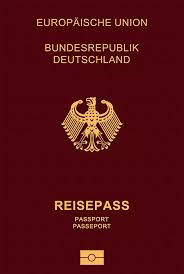Documents for foreigners in Germany
Documents for foreigners
ARTICLE ADMINISTRATIVE REFORM
The electronic travel document and electronic residence permit have been standardized throughout the European Union in order to improve document security.
Documents relevant to residence law are issued to citizens of other EU member states or non-EU countries (known as third-country nationals) on a case-by-case basis.
Electronic travel document
The electronic travel document for foreigners, refugees and stateless persons was introduced in Germany in November 2007.
The electronic travel document contains a digital photograph of the document holder. A second-generation travel document, which also includes two digital fingerprints, has been issued since 29 June 2009.
This new technology ensures a high level of security against forgery and document fraud.
Why were electronic travel documents introduced?
Like the electronic passport for German citizens, the new travel documents are intended to significantly improve and speed up identity checks. In addition, the card-holder information and biometric data stored on the chip prevent forgery and misuse by unauthorized persons.
Foreigners can view the data stored on the chip of their electronic travel document at foreigners authorities using a special chip reader.
Data stored on the chip in the electronic travel document
The type of data stored on the chip in the electronic travel document is the same as for the German passport, including the following personal and document-related information:
- first and last name, date of birth, sex and nationality;
- serial number, issuing country, document type and date of expiry.
International standards
The electronic travel document is a passport substitute, so it must be suitable for determining whether the person presenting the document during an identity check is also the rightful document holder. In addition to a conventional visual check, it is also possible to check the electronic travel document using a machine, which is the most important reason for introducing chip technology and biometrics in personal identification documents.
To check the electronic travel document using a machine, officials must be able to access the data on the chip. At the same time, this data must be protected against unauthorized access. The solution was worked out in international and European cooperation: The data stored on the chip are electronically signed, so they cannot be altered without escaping notice. And immediately after the data have been added to the chip, further write access is blocked. In addition, technical mechanisms have been defined EU-wide to protect the data on the chip against unauthorized access.
How access protection works
In an official inspection, the document holder hands the document over to the inspecting official, who opens the document and scans its machine-readable zone (MRZ), which contains the document holder’s first and last name and date of birth, and the document’s number and date of expiry. The last three items of information are used to generate a key which the document reader sends to the document in order to gain access to the data stored on the chip. That is, the document releases its data when the date of birth, document number and date of expiry are sent to it.
Additional protection for fingerprints
As especially sensitive personal data, the fingerprints stored on the chip receive additional protection on top of the already high security standard. Germany advocated an additional security mechanism and developed it in the relevant European bodies under the supervision of the Federal Criminal Police Office and the Federal Office for Information Security.
This additional protection has been added to the second-generation electronic travel document: The fingerprints on the chip can be read only by countries which Germany has granted special access rights.






Comments
Post a Comment